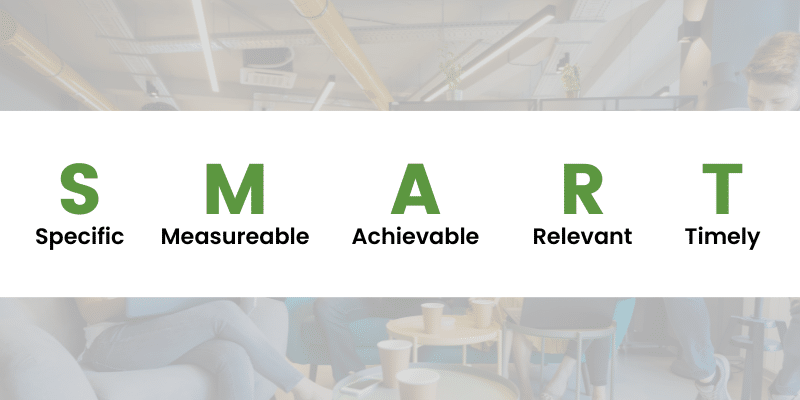If you aren’t tracking key performance indicators (KPIs) within your human resources (HR) department, you should be. HR KPIs are a critical tool for providing a clear and quantifiable measure of the effectiveness of HR practices and their impact on an organization.
These metrics offer valuable insights into various aspects of talent management, from recruitment and employee engagement to training and development—enabling HR leaders to make data-driven decisions.
The Importance of HR KPI’s
By tracking KPIs, HR leaders can assess the success of their initiatives, identify areas that require improvement, and align their strategies with overall business goals. Additionally, KPIs help in demonstrating the value of HR functions to senior management and stakeholders, fostering a culture of accountability, and ensuring that HR efforts contribute directly to the organization’s success.
In essence, KPIs empower HR leaders to optimize their processes and ensure their department plays a pivotal role in driving the entity forward.
Choosing the Right HR KPIs for Your Organization
Choosing the right KPIs is a critical first step to effectively measuring and improving HR performance. Start by aligning KPIs with your organization’s specific goals and objectives. Understand what aspects of HR are most critical to your organization, whether it’s recruitment, employee retention, training, or diversity and inclusion. Engage with key stakeholders and department heads to identify their key concerns and performance indicators. And remember, KPIs should be SMART — Specific, Measurable, Achievable, Relevant, and Time-bound.
Once you’ve defined your objectives, carefully select KPIs that quantifiably represent these goals. Consider a mix of leading and lagging indicators to gauge both current performance and the potential for future success. Regularly review and adjust your KPIs as organizational priorities evolve, ensuring that they remain relevant.

Turnover Rate & Cost of Turnover
In combination, Turnover Rate and Cost of Turnover provide a comprehensive view of workforce dynamics. Turnover Rate measures the percentage of employees who leave the organization over a specific period. A high turnover rate can be a warning sign of potential issues, such as poor workplace culture, inadequate employee development, or ineffective recruitment practices. To utilize this KPI effectively, HR leaders should calculate it regularly, categorize the reasons for departures — i.e. voluntary, involuntary, retirement — and benchmark it against industry standards to gain a broader perspective.
Similarly, Cost of Turnover quantifies the financial impact of employee turnover, encompassing the costs associated with recruiting, onboarding, training, and lost productivity during the transition. By calculating this cost, HR can draw attention to the expenses incurred when an employee departs and a new one is hired. Understanding the financial ramifications helps HR departments justify investments in employee engagement, development, and retention programs. It also enables them to work with other departments to implement strategies that reduce employee turnover.
Employee Engagement Rate
Employee Engagement directly reflects the emotional connection, commitment, and motivation of employees within an organization. Measuring it goes beyond merely assessing job satisfaction; it delves into the extent to which employees are invested in their work, their teams, and the organization’s mission.
High levels of employee engagement are associated with increased productivity, retention, and customer satisfaction. By tracking this KPI through surveys, feedback mechanisms, and regular assessments, HR directors can gain insights into the overall health of their workforce.
Employee Net Promoter Score (eNPS)
A simple yet effective way to gauge overall employee sentiment and loyalty is the Employee Net Promoter Score (eNPS). It measures the likelihood of employees recommending their organization as a great place to work. A high eNPS indicates a workforce that is not only satisfied with their jobs but also enthusiastic about the company’s culture and values.
Conversely, a low eNPS may signal underlying issues like poor management, low morale, or communication gaps. By regularly tracking eNPS, organizations can create a workplace that not only retains talent but also turns employees into enthusiastic ambassadors.

Employee Tenure and Retention Rate
Employee Tenure measures the average length of time employees stay with the organization. On the other hand, Retention Rate quantifies the percentage of employees who remain with the organization over a specific period, reflecting the success of retention efforts. High tenure and retention rates are typically indicators of a healthy work environment, strong leadership, and effective HR strategies.
Promoting employee tenure and high retention rates can lead to cost savings associated with recruitment and onboarding and they are fundamental to shaping HR strategies aimed at fostering a stable, engaged, and committed workforce.
Challenges and Best Practices in HR KPI Tracking
Tracking KPIs may be indispensable for informed decision-making, but it comes with its own set of challenges, including accuracy and availability of data, as well as alignment with organizational goals. HR departments often struggle with data integrity, including outdated or inconsistent records affecting KPI accuracy. Ensuring that KPIs are relevant and actionable also demands attention.
To address these issues, best practices involve defining clear and specific KPIs, ensuring data quality through regular audits, and utilizing advanced HR software and data analytics tools to make KPI tracking efficient and accurate. Regular communication with department heads and key stakeholders is vital for maintaining alignment with organizational objectives. Additionally, establishing a regular reporting schedule, where KPIs are tracked and shared with relevant parties, can promote transparency and accountability.
Track Your HR Metrics With People Element’s Company Surveys
Ultimately, tracking your HR metrics is a dynamic process that requires continuous improvement to meet the evolving needs of both the HR department and the broader organization.
People Element’s employee survey solution is designed to make the process simple and effective, helping organizations understand their people like never before—with the HR KPIs to prove it. Contact us today and request a free demo.





